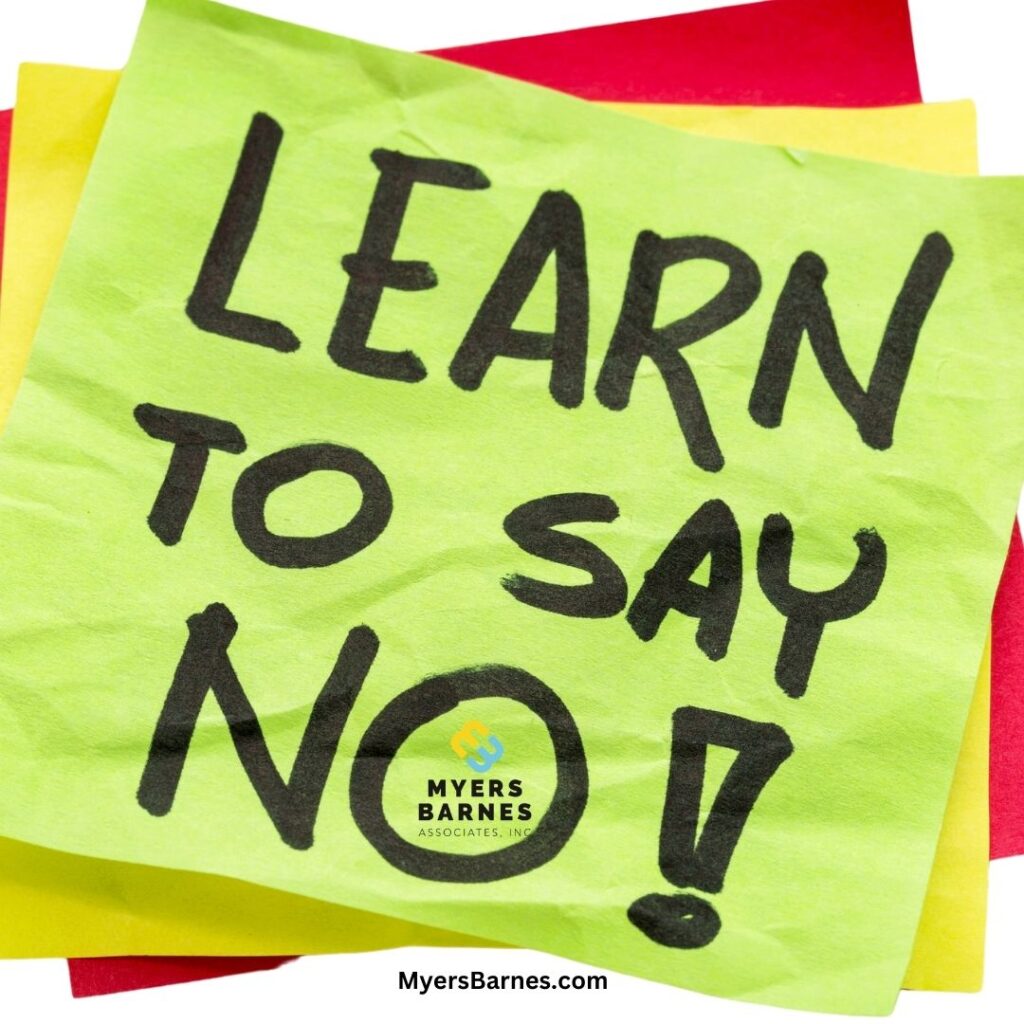
Why is “no” such a hard word to say or hear? In new home sales, it’s a given that you’re going to hear it in any negotiation. But have you mastered how to say “no” and keep moving forward in the discussion? It should be included in any sales training program! When you know how to use a negative response in a positive way, you gain control of any situation.
Your job is to sell your customer the right home for them—providing a solution, not making a sale. Your buyer wants that home at the best price you are willing to offer. That’s the basics of price resistance.
You want to please your customer, but not at the cost of profitability. You won’t have a job much longer if you choose that route.
Some customers are testing your boundaries, looking to see how elastic you are. Others push hard, perhaps with unreasonable demands. In either case, you should be ready with your responses so that you control the negotiation. Before you say “yes” under duress, learn how to say “no” and keep moving forward.
Start with a kindness warm-up.
“No” can feel like rejection. Whether you’re on the giving or receiving end, it’s not pleasant. Someone is about to experience disappointment, frustration, or even anger. When you know you need to turn down a prospective buyer’s request, don’t jump into it. Like any unpleasant news, soften the blow with kindness.
Thank them for their interest, because they obviously wouldn’t be requesting a concession that you have to reject if they weren’t prepared to move forward.
- Remind them of the positive aspects: “I appreciate that you want this home. It’s a great fit for your needs, and I’m willing to do what I can. Unfortunately, what you’re asking isn’t something we can accommodate. But there are so many others to work through, so let’s look at what we CAN do!”
- Show empathy: “I can appreciate your situation. What you’re asking makes sense given what you’ve told me, so I’m sorry that I can’t say ‘yes’ as it stands right now.”
- Communicate your understanding so they feel you’re listening: “I can see why you would need that. Unfortunately, I can’t give it to you.”
Preface the “no” with a “but” statement.
In the art of improv, there’s a method known as “Yes, and”, which is used to expand on a point. “And” is a continuation of a positive thought.
In sales, you have the “No, but” method. You’re delivering a negative while adding a positive twist. In the world of “No, but” selling, you’re not ending a conversation but redirecting it, lifting it upwards.
- “I really wish I could make that work, but I can’t. Why don’t we look at the other (features, conditions, priorities) that will make this work.”
- “I’d love to agree to that condition, but our builder has established standards to protect our customers—buyers like you.”
- “Oh, if only I could! It’s just not something we can give you.”
Be transparent.
“That’s a great idea and I wish I could say ‘yes’, but we just can’t offer that. And here’s why.”
Explain to your buyer why you can’t say “yes” to their request. When your buyer understands your position, they have deeper insight into your company: the vision, integrity, and quality of the products. Saying “no” can be a way to show that you don’t make deals for some customers and not for others, that you maintain a high standard.
Also, be clear about the difference between the words “don’t” and “can’t”. “We don’t” conveys that you’re unwilling to agree to their request. “We can’t” communicates that you are unable to give them what they want. As subtle as these differences may seem, your buyer may notice whether you’re unwilling or unable.
Show flexibility.
Can you find another way to get to what they’re trying to gain? If you can say “not this, but maybe that”, you might find a solution that’s feasible for you and acceptable for your buyer. Remember, a successful negotiation occurs when both sides walk away feeling satisfied with what they received.
“While I can’t give you that, let’s look at some other options that I can offer. Maybe we can find another way to help you get to where you need to be.”
Postpone the discussion.
You can also skip the “no” for the moment. Take control of the conversation without dipping into the negative zone.
“I’d like to say ‘yes’, but we’ll need to take other things into consideration. Can we circle back on that point later? After we’ve looked at everything?”
You then use the time to focus on the selling points that establish value in the mind of your homebuyer.
A painless “no” on the way to “yes”.
When you know how to say “no” and keep moving forward, you protect your selling position: your time, your builder’s profitability, and even your confidence. Using any of the examples in this article presents a way to say “no” without being negative. Maybe it’s “not now”, “not yet”, or “not under these conditions”.
In your sales training, practice your responses when you have to reject a customer’s request. When used correctly, “No” is a negotiating point. And it’s a word that helps you maintain balance in your life, and this skill will guide you to be a better sales professional. Learn how to say “No” and keep moving forward.


